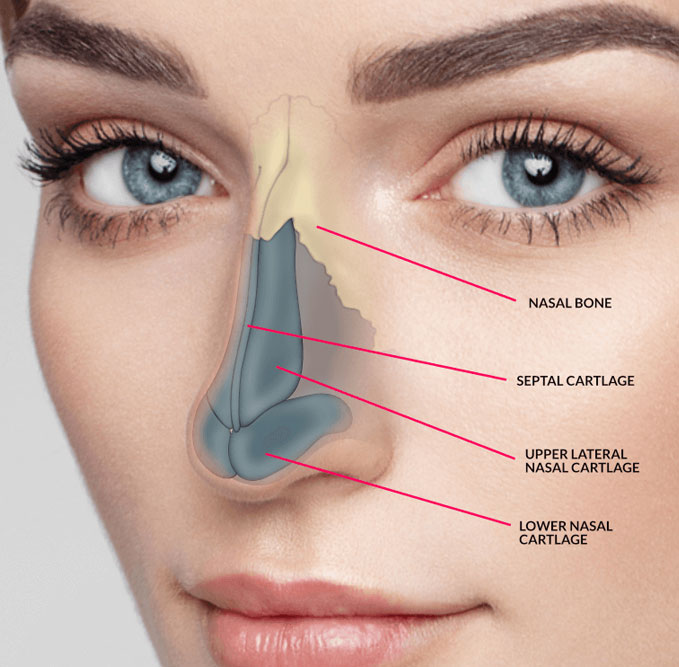Nose Surgery
Nose surgery, also known as rhinoplasty, is a surgical procedure that involves altering the shape, size, or function of the nose. It is a common cosmetic and reconstructive surgery that can address various issues related to the nose's appearance and functionality. Here is a brief overview of nose surgery:
- Cosmetic Rhinoplasty: Cosmetic rhinoplasty is performed to improve the aesthetic appearance of the nose. It can address issues such as a hump on the bridge of the nose, a wide or crooked nose, a bulbous tip, or nostrils that are too large or flared. The goal is to create a more balanced and harmonious facial profile.
- Functional Rhinoplasty: Functional rhinoplasty is focused on correcting issues related to the nose's function, such as breathing problems caused by a deviated septum or other structural abnormalities. This type of surgery aims to enhance airflow through the nasal passages and improve overall respiratory function.
- Reconstructive Rhinoplasty: Reconstructive rhinoplasty is performed to restore the appearance and function of the nose after trauma, injury, or congenital deformities. It can address issues like a missing or severely damaged nose and is often used in cases of facial trauma or congenital malformations.
- Ethnic Rhinoplasty: Ethnic rhinoplasty is a specialized form of surgery that takes into account the unique characteristics and aesthetic preferences of individuals from different ethnic backgrounds. It aims to enhance the nose while preserving the person's cultural identity.
- Non-Surgical Rhinoplasty: Non-surgical or liquid rhinoplasty involves the use of dermal fillers to reshape and contour the nose temporarily. This option is suitable for those who seek minor adjustments without undergoing surgery but requires regular maintenance.
The rhinoplasty procedure typically involves making incisions inside the nose (closed rhinoplasty) or, in some cases, on the outside of the nose (open rhinoplasty). Through these incisions, the surgeon can reshape the bone, cartilage, and soft tissue of the nose as needed. Recovery time varies depending on the extent of the surgery, but patients can expect some swelling and bruising, which typically subside over a few weeks.

